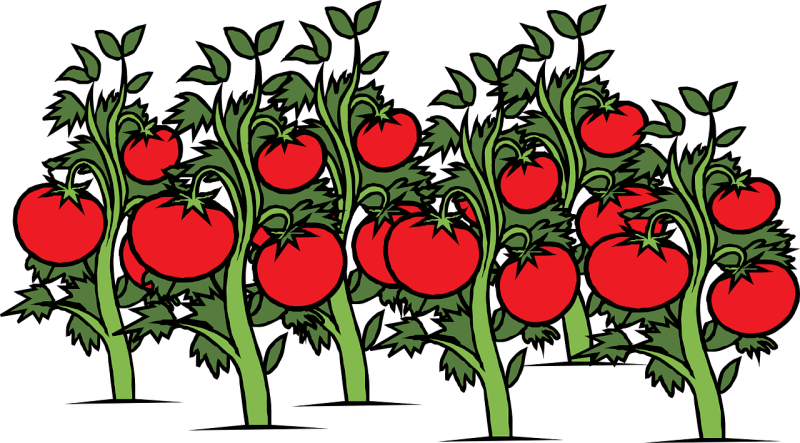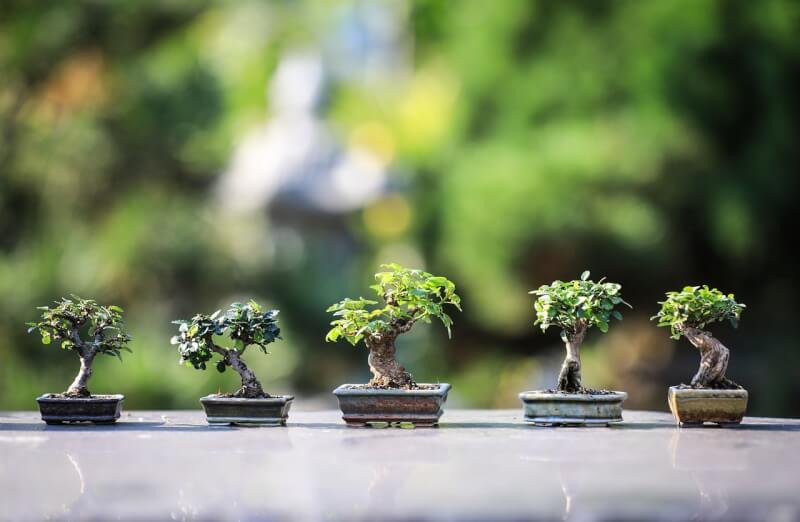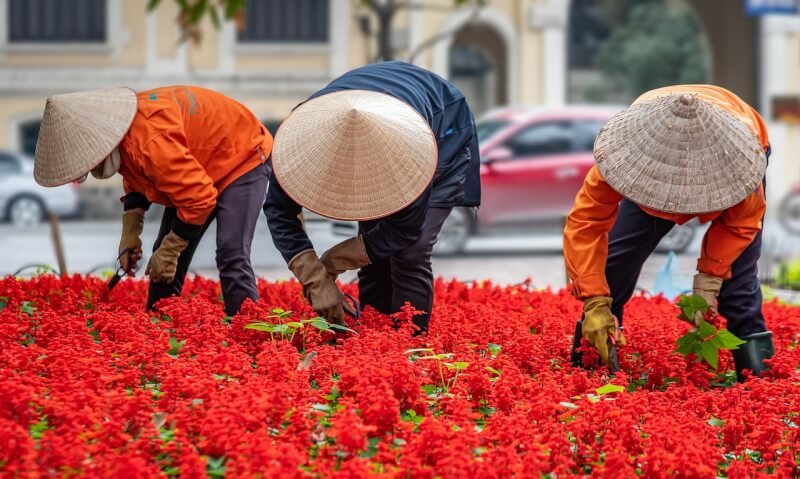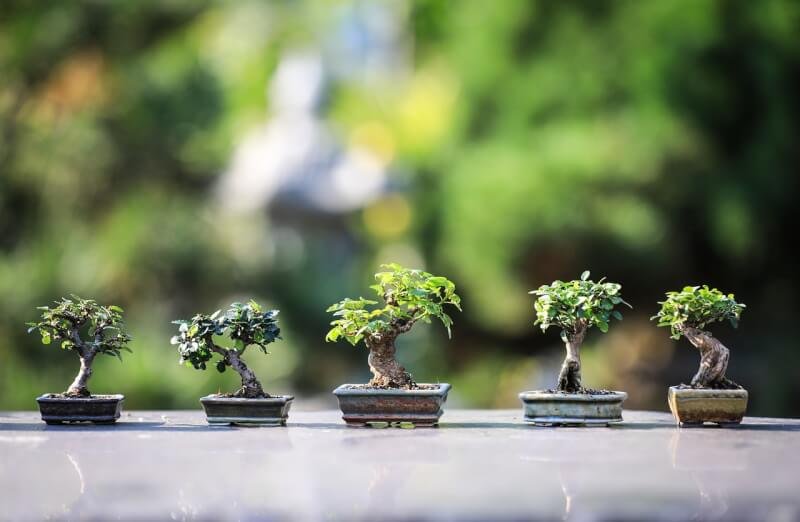Imagine transforming your urban garden into a thriving oasis, ripe with the luscious flavors of homegrown fruit. Whether you are a seasoned gardener or just starting out, growing fruit trees in an urban setting can be both rewarding and challenging. From limited space to unique climate conditions, there are several factors to consider in order to successfully nurture these bountiful trees. In this article, we will explore the key considerations for turning your urban garden into a fruitful haven, providing you with the knowledge and confidence to embark on this deliciously fruitful journey.

Soil Requirements
Testing the Soil
Before planting fruit trees in your urban garden, it is essential to test the soil. Testing the soil will provide valuable insights into its composition and help determine its suitability for fruit tree growth. Soil testing can be done using a home testing kit or by sending a sample to a professional laboratory. The tests will measure important factors such as pH levels and nutrient content.
pH Levels
pH levels play a crucial role in plant health and nutrient availability. Most fruit trees prefer a slightly acidic to neutral soil pH range of 6.0 to 7.0. However, it is essential to know the specific pH preferences of the fruit tree you wish to grow. If your soil’s pH is too low or too high, you can make amendments to adjust it accordingly. Adding lime can raise the pH, while elemental sulfur can lower it.
Nutrient Needs
Fruit trees require a balanced supply of essential nutrients for healthy growth and optimum fruit production. Common essential nutrients include nitrogen, phosphorus, and potassium, along with secondary nutrients like calcium, magnesium, and sulfur. Soil testing will help identify any nutrient deficiencies or imbalances, allowing you to make appropriate amendments. Organic matter, such as compost or well-rotted manure, can also improve soil fertility and provide a slow-release source of nutrients.
Improving Soil Quality
If soil testing reveals poor soil quality, there are various ways to improve it. Adding organic matter, such as compost or aged manure, can enhance soil structure and nutrient-holding capacity. Incorporating organic matter also improves water drainage and aeration, which are crucial for root health. Additionally, using cover crops or green manures can help replenish soil nutrients and prevent erosion. Mulching around fruit trees helps maintain moisture levels, suppress weed growth, and add organic matter over time.
Choosing the Right Tree Type
Determining the Climate Zone
When selecting fruit trees for your urban garden, it is essential to consider your specific climate zone. Different fruit tree species have varying temperature and moisture requirements. Research the hardiness zones in your area to understand which fruit trees are best suited for your specific climate. Choosing fruit tree varieties adapted to your climate zone increases the chances of successful growth and fruit production.
Considering Tree Size
Urban gardens often have limited space, making it crucial to consider the mature size of the fruit trees you select. Dwarf or semi-dwarf fruit tree varieties are ideal for small spaces. These varieties have been bred to remain compact, making them suitable for container planting or confined areas. Standard-size fruit trees are better suited for larger urban gardens where space is not an issue.
Pollination Needs
Many fruit trees require cross-pollination with another compatible variety to produce fruit. Be sure to check the pollination requirements of the fruit tree species you choose. Some fruit trees are self-fertile, meaning they can pollinate themselves, while others require a different variety nearby to ensure successful pollination. It is essential to plant the correct pollination partners and understand their bloom times to ensure proper fruit set.
Suitable Fruit Varieties
Different fruit tree varieties have varying needs and preferences. Consider the desired fruit quality, disease resistance, and availability when choosing fruit tree varieties for your urban garden. Some varieties may be more resistant to common pests and diseases, reducing the need for chemical interventions. Research local nurseries or consult with experts to find suitable fruit tree varieties that thrive in your specific growing conditions.

Available Space
Assessing Available Space
Before planting fruit trees, assess the available space in your urban garden. Consider the dimensions of the area where you plan to plant the fruit trees, taking into account any existing structures or obstacles. Knowing the available space will help determine the number of fruit trees you can accommodate and their spacing requirements.
Considering Tree Spacing
Proper spacing between fruit trees is essential for optimal growth and fruit production. Overcrowding can lead to competition for resources and increased risk of diseases. Different fruit tree species have specific spacing requirements, which are influenced by their mature size. Research the recommended spacing guidelines for the specific fruit tree varieties you choose to ensure adequate room for growth and airflow.
Utilizing Vertical Space
In limited urban gardens, utilizing vertical space can be a practical solution. Certain fruit tree varieties, such as espalier or columnar forms, are trained to grow against walls or fences. This technique maximizes space utilization while adding a unique aesthetic appeal to your garden. Additionally, trellises, arbors, or pergolas can be used to support fruit trees and create vertical growing areas.
Espalier Techniques
Espalier techniques involve training fruit trees to grow in a flat, two-dimensional form against a support structure, such as a wall or trellis. This method saves space and offers easier access for pruning and harvesting. It also allows for better light penetration and airflow, reducing the risk of diseases. Espaliered fruit trees can be an attractive focal point in the garden, turning them into functional, ornamental features.
Light Requirements
Amount of Sunlight
Proper sunlight exposure is crucial for fruit tree growth and fruit production. Most fruit trees require a minimum of six to eight hours of direct sunlight per day. Observe the sunlight patterns in your urban garden throughout the day to determine which areas receive the most sunlight. Plant your fruit trees in locations that offer adequate sunlight to ensure healthy growth and high-quality fruit.
Tree Orientation
When planting fruit trees in your urban garden, consider the tree’s orientation to optimize sunlight exposure. In the Northern Hemisphere, planting trees on the south side of your garden ensures maximum sunlight exposure. South-facing trees receive more sunlight throughout the day, allowing for better photosynthesis and fruit development. However, if your garden has some sheltered areas, consider tree orientation that maximizes sun exposure while protecting the trees from strong winds or extreme heat.
Shade from Surrounding Buildings
In urban environments, surrounding buildings can cast shade on your fruit trees, limiting their sunlight exposure. Assess the potential shade patterns from nearby structures and plant your fruit trees accordingly. Avoid planting fruit trees where they will be constantly shaded, as this can negatively impact growth and fruit production. If necessary, consider planting shade-tolerant species or using shading techniques, such as reflective materials or shade cloth, to redirect sunlight to shaded areas.
Pruning for Light Penetration
Proper pruning practices can improve light penetration within the fruit tree canopy. Thinning out dense branches and removing any crossed or rubbing limbs allows sunlight to reach the inner parts of the tree. Adequate light penetration enhances photosynthesis, promotes overall tree health, and ensures better fruit development. Regular pruning also helps maintain the desired tree shape and size, preventing overcrowding and facilitating easier maintenance.

Rooting Space
Understanding Root Systems
Understanding the root systems of fruit trees is crucial for successful planting and growth. Most fruit trees possess a combination of tap roots and lateral roots. Taproots provide structural support and access to deep soil moisture, while lateral roots spread out to capture nutrients and water near the soil surface. Proper root development is essential for tree stability, nutrient uptake, and overall health.
Depth and Spread
Different fruit tree species have varying root system characteristics, including root depth and spread. Understanding these characteristics helps determine root space requirements during planting. Some fruit trees have deep tap roots, necessitating deeper planting holes, while others have more spreading root systems, requiring wider planting areas. Research the specific fruit tree species you plan to grow to ensure appropriate root space for optimal growth and stability.
Importance of Soil Drainage
Well-draining soil is critical for healthy root development in fruit trees. Excessive water accumulation can lead to root rot and other water-related issues. Ensure your urban garden’s soil has adequate drainage before planting fruit trees. If the soil is heavy or poorly draining, consider amending it with materials like compost, sand, or perlite to improve drainage and prevent waterlogged conditions.
Root Barrier Considerations
In urban gardens, it is essential to consider root barriers to prevent invasive root growth. Installing a root barrier, such as a geotextile fabric or metal sheet, can help direct root growth away from nearby structures or sensitive areas. The barrier should extend at least 2-3 feet deep to block lateral root spread. Proper root barrier installation during the initial planting stages can save you from potential future damage and costly repairs.
Pest and Disease Management
Identifying Common Pests
Pests can pose a significant threat to fruit trees, affecting both tree health and fruit quality. Familiarize yourself with common pests that can afflict your chosen fruit tree species. These can include insects, such as aphids or caterpillars, as well as diseases caused by fungi, bacteria, or viruses. Regularly monitor your trees for signs of pests and diseases to address any issues promptly.
Preventing Infestations
Prevention is key when it comes to managing pests and diseases in your urban fruit trees. Implement good garden hygiene practices, such as removing fallen leaves, fruit, or debris, as they can harbor pests and diseases. Prune your trees regularly to improve airflow and reduce the risk of fungal infections. Applying horticultural oils or organic insecticides can help deter pests without harming beneficial insects or compromising fruit quality.
Choosing Resistant Varieties
Selecting fruit tree varieties that exhibit resistance to common pests or diseases can greatly simplify pest management. Disease-resistant varieties have genetic traits that make them less susceptible to specific diseases, reducing the need for chemical interventions. Choose fruit tree cultivars that have been bred or selected for resistance to pests and diseases prevalent in your area.
Organic Pest Control Methods
Organic pest control methods can be effective in managing pests while promoting environmental sustainability. Encourage beneficial insects, such as ladybugs or lacewings, that feed on pests by providing appropriate habitat and avoiding the use of broad-spectrum insecticides. Utilize natural predators, like birds or bats, through the installation of birdhouses or bat boxes. Additionally, homemade remedies, such as soap sprays or neem oil, can control certain pests without resorting to chemical pesticides.
Watering and Irrigation
Determining Water Needs
Establishing proper watering practices is crucial for the health and vitality of your urban fruit trees. While the specific water requirements depend on factors such as climate, soil type, and tree age, it is crucial to avoid over or under watering. Monitor the moisture levels in your soil regularly and adjust watering frequency accordingly. Young trees typically require more frequent watering to support root establishment, while established trees may only need supplemental irrigation during dry periods.
Proper Watering Techniques
When watering fruit trees, it is essential to provide deep, thorough irrigation rather than frequent shallow watering. Deep watering encourages root growth and enables moisture penetration to the root zone. Apply water directly to the soil surface around the base of the tree using methods such as drip irrigation or a soaker hose. Avoid wetting the leaves as this can lead to fungal diseases. Water in the early morning or late evening to minimize water loss due to evaporation.
Mulching to Retain Moisture
Mulching around fruit trees offers numerous benefits, including water retention. Apply a layer of organic mulch, such as wood chips or straw, around the base of the tree, extending it several inches away from the trunk. Mulch helps conserve soil moisture by reducing evaporation, suppressing weed growth, and regulating soil temperature. Maintain a mulch layer of 2-4 inches depth, replenishing it as needed.
Rainwater Harvesting
In urban gardens, rainwater harvesting is an environmentally sustainable way to supplement irrigation needs. Install rain barrels or cisterns to collect rainwater from rooftops. This captured water can be used to water fruit trees during dry periods or as a supplemental water source. Rainwater is free from harmful chemicals and is beneficial for fruit trees due to its natural composition.
Pollination and Fruit Set
Understanding Pollination
Pollination is a crucial process for fruit tree reproduction and fruit set. It involves the transfer of pollen from the male reproductive parts to the female reproductive parts of flowers. Pollination can occur through wind, self-pollination, or by pollinators such as bees, butterflies, or birds. Understanding the pollination requirements of the fruit tree species you are cultivating is essential for ensuring successful fruit development.
Attracting Pollinators
Encouraging pollinators to visit your urban garden can significantly increase fruit tree pollination rates. Planting flowering plants, especially those with bright colors and sweet fragrances, attracts pollinators. Include a variety of flowers that bloom throughout the growing season to provide a continuous food source for pollinators. Providing nesting sites, such as bee boxes or insect hotels, can further enhance pollinator habitat and increase fruit set.
Hand Pollination Techniques
In some cases, hand pollination may be necessary, especially if pollinators are scarce or fruit tree varieties are self-sterile. Hand pollination involves manually transferring pollen from one flower to another using a small brush or cotton swab. Gently brush the stigma of the female flower with pollen collected from the male flower’s anthers. Repeat this process on multiple flowers to ensure sufficient pollination for fruit set.
Conditions for Fruit Set
Optimizing conditions for fruit set is essential for a plentiful harvest. Adequate pollination, consistent moisture, and ideal environmental conditions play a significant role in successful fruit set. Ensure that your trees have sufficient access to water, nutrients, sunlight, and airflow. Minimize stress factors, such as extreme temperature fluctuations or drought, as these can negatively impact fruit set and result in inferior-quality fruit.
Pruning and Training
Pruning for Shape and Size
Pruning fruit trees is an essential practice to maintain shape, size, and overall tree health. Proper pruning enhances air circulation, reduces disease incidence, and allows sunlight to penetrate the canopy. Prune fruit trees during their dormant season, typically in late winter or early spring. Remove dead, damaged, or crossing branches to improve the tree’s structure and promote vigorous growth.
Promoting Air Circulation
Good air circulation within the fruit tree canopy reduces the risk of diseases and promotes healthier growth. Prune fruit trees to open up the canopy, allowing sunlight to reach the inner branches and increasing airflow. Remove any branches that are densely clustered or rubbing against each other. Thinning out excessive growth helps prevent the development of moist, shaded environments that favor fungal infections.
Training Young Trees
Training young fruit trees is critical for shaping their growth and establishing desired forms. Prune young trees to develop a strong framework of branches that can support future fruit production. Utilize training techniques such as central leader, modified central leader, or open center systems, depending on the fruit tree species and desired growth habit. Regularly monitor tree growth and adjust pruning techniques as needed to guide the tree’s development.
Renewal Pruning
Renewal pruning rejuvenates mature fruit trees, promotes new growth, and improves overall productivity. Periodically remove older, unproductive branches to stimulate the growth of new shoots. This practice allows light to penetrate the interior of the tree and promotes the development of fruiting wood. Renewal pruning should be done during the dormant season, taking care not to remove more than one-third of the tree’s overall canopy.
Harvesting and Storage
Determining Fruit Maturity
Knowing when to harvest fruit is crucial for optimal flavor, texture, and juiciness. Different fruit tree species have varying signs of maturity. Pay attention to visual cues, such as color changes, size, and firmness. Additionally, taste-testing can help determine if the fruit has reached peak flavor. Harvest fruit when it is fully ripe or slightly underripe, as overripe fruit may be mushy and susceptible to rot.
Harvesting Techniques
Proper harvesting techniques ensure the least amount of damage to both the fruit and the tree. Use pruning shears or sharp knives to cut the fruit gently from the tree, leaving a small stem attached. Avoid pulling or twisting the fruit, as this can damage the branch and potentially the tree. Handle harvested fruit with care to prevent bruising or other physical damage that can compromise fruit quality.
Proper Storage Methods
To prolong the shelf life and maintain the quality of harvested fruit, proper storage methods are crucial. Some fruit can be stored at room temperature, while others require refrigeration. Store fruit away from direct sunlight and in cool, well-ventilated areas. Some fruit may benefit from being stored in perforated bags or containers that allow for better air circulation. Regularly check stored fruit for any signs of spoilage and consume or process accordingly.
Preservation and Processing
Preservation and processing techniques allow you to enjoy the abundance of your urban fruit harvest throughout the year. Common preservation methods include canning, freezing, or drying. Canning involves preserving fruit in jars or cans, usually by heating them to eliminate bacteria or other microorganisms. Freezing fruit preserves its natural flavor and texture, and drying removes moisture to extend the shelf life. Explore recipes and techniques specific to the fruit varieties you are working with to preserve them effectively.
In conclusion, growing fruit trees in an urban garden requires careful consideration of various factors. Understanding soil requirements, selecting the right tree types, maximizing available space, providing adequate light and rooting space, managing pests and diseases, ensuring proper watering and irrigation, promoting pollination and fruit set, pruning and training trees, and mastering harvesting and storage techniques are all crucial elements of successful fruit tree cultivation. By following these guidelines and adapting them to your specific urban gardening conditions, you can enjoy the pleasure of growing your own delicious fruits right in the heart of the city. Happy growing!


